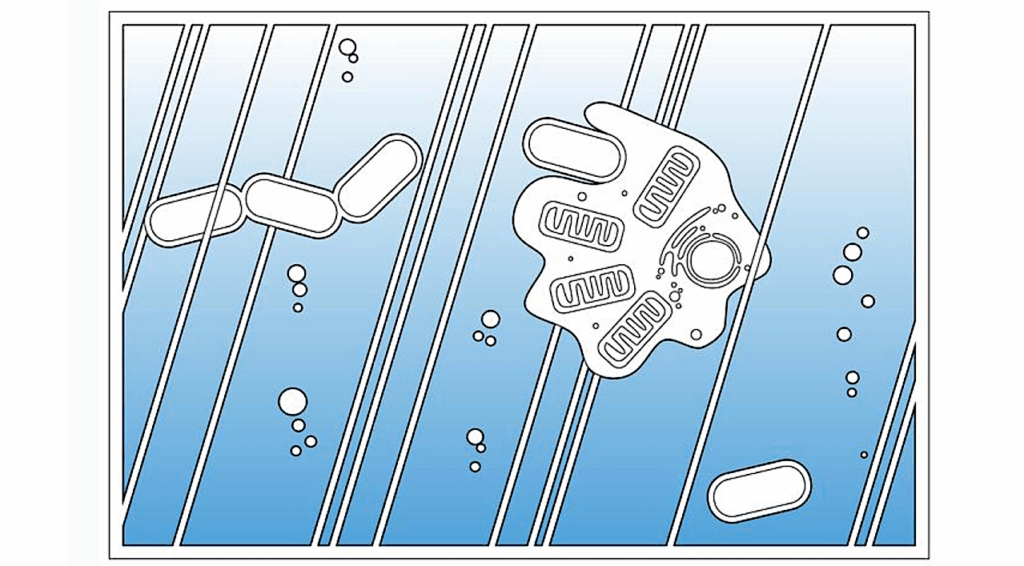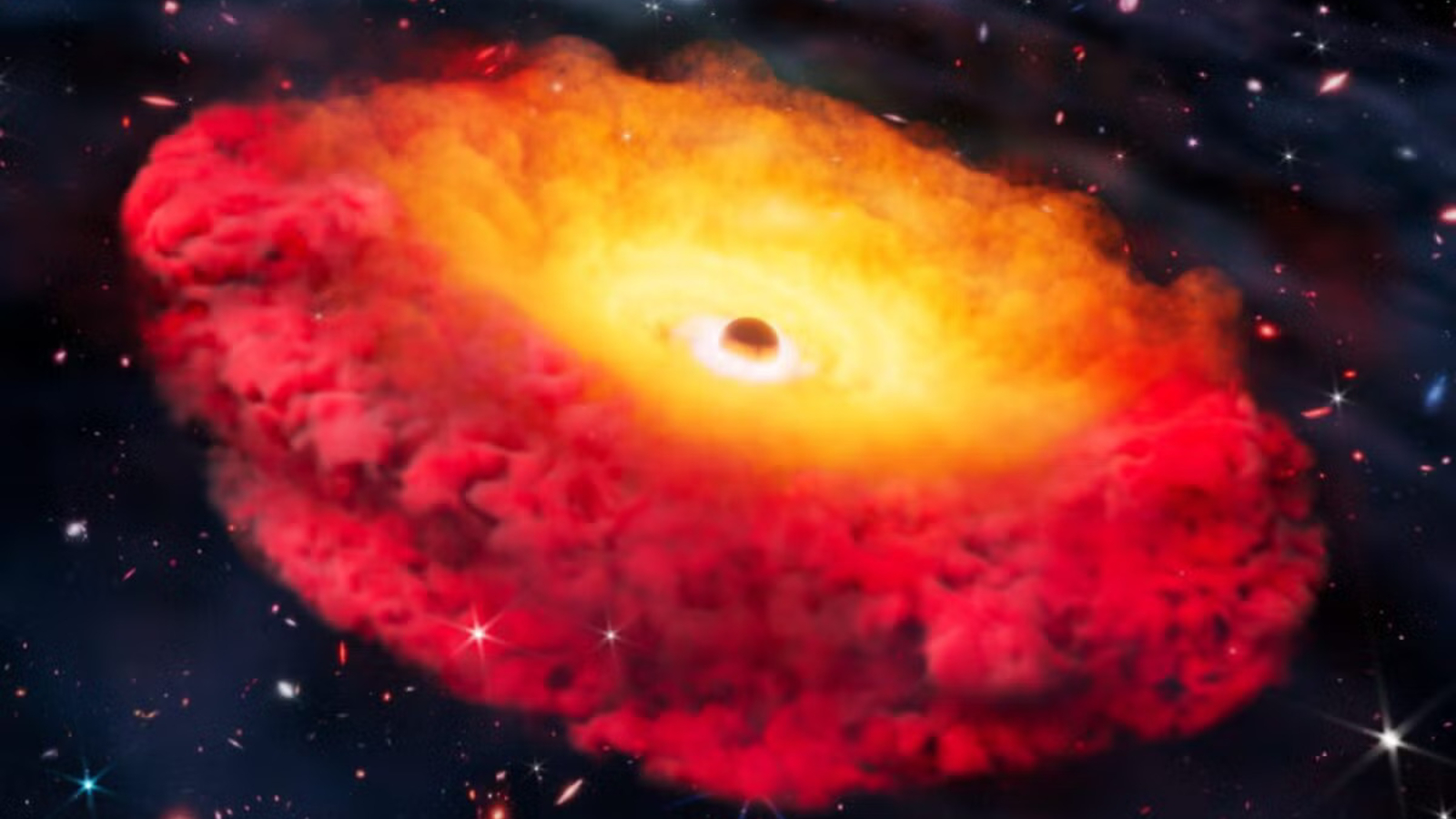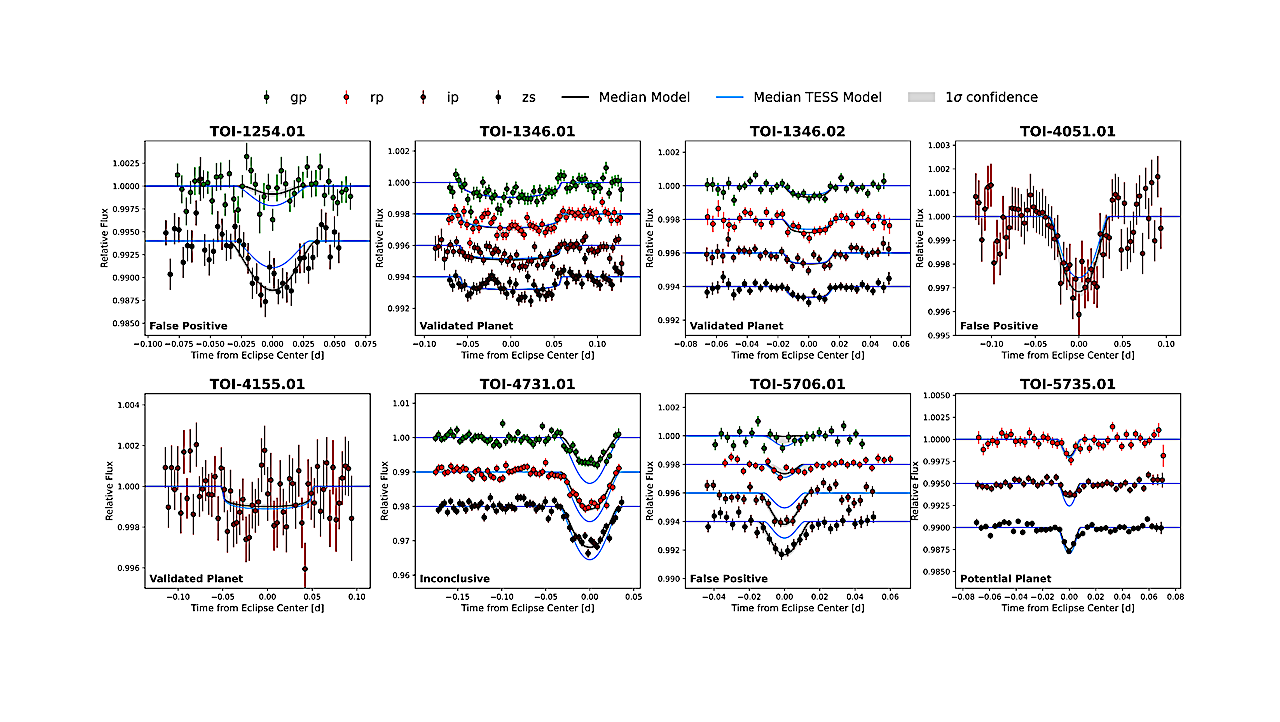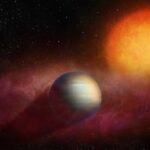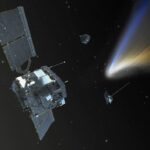Now Reading: MINDS. Cha Ha 1, A Brown Dwarf With A hydrocarbon-rich Disk
-
01
MINDS. Cha Ha 1, A Brown Dwarf With A hydrocarbon-rich Disk
MINDS. Cha Ha 1, A Brown Dwarf With A hydrocarbon-rich Disk


χ2 maps for HCN, CO2 + 13CO2, C6H6, C2H4, C2H6, CH4, and water. The color scale shows the χ2min/χ22 . The best fit model (χ2 min/χ2 = 1) is marked with a red circle. A red contour denotes the emitting region radius as listed in Table 2. Gray contours show the emitting radii in au while white contours represent the 1σ, 2σ, and 3σ levels. — astro-ph.SR
Context. Recent JWST observations have shown that brown dwarfs (BD) are chemically rich, offering valuable insights into giant planet formation.
Aims. As part of the MIRI mid-INfrared Disk Survey (MINDS) JWST guaranteed time program, we aim to characterize the gas and dust composition of the disk around the brown dwarf [NC98] Cha HA 1, hereafter Cha Hα 1, in the mid-infrared.
Methods. We obtain data from the MIRI Medium Resolution Spectrometer (MRS) from 4.9 to 28μm. We use the dust fitting tool DuCK to investigate the dust composition and grain sizes while we identify and fit molecular emission using slab models.
Results. Compared with disks around very low mass stars, clear silicate emission features are seen in this BD disk. In addition, JWST reveals a plethora of hydrocarbons, including C2H2, 13CCH2, CH3, CH4, C2H4, C4H2, C3H4, C2H6, and C6H6 which suggest a disk with a gas C/O > 1. Additionally, we detect CO2, 13CO2, HCN, H2, and H2O. CO and OH are absent from the spectrum. The dust is dominated by large ∼4 μm size amorphous silicates (MgSiO3). We infer a small dust mass fraction (>10%) of 5 μm size crystalline forsterite. We do not detect polycyclic aromatic hydrocarbons.
Conclusions. Cha Hα 1 shows the most diverse chemistry seen to date in a BD protoplanetary disk, consisting of a strong dust feature, 12 carbon-bearing molecules plus H2, and water. The diverse molecular environment offers a unique opportunity to test our understanding of BD disks chemistry and how it affects the possible planets forming in them.
María Morales-Calderón, Hyerin Jang, Aditya M. Arabhavi, Valentin Christiaens, David Barrado, Inga Kamp, Ewine F. van Dishoeck, Thomas Henning, L. B. F. M. Waters, Milou Temmink, Manuel Güdel, Pierre-Olivier Lagage, Alessio Caratti o Garatti, Adrian M. Glauser, Tom P. Ray, Riccardo Franceschi, Danny Gasman, Sierra L. Grant, Till Kaeufer, Jayatee Kanwar, Giulia Perotti, Matthias Samland, Kamber Schwarz, Marissa Vlasblom, Luis Colina, Göran Östlin
Comments: 16 pages, 14 figures
Subjects: Solar and Stellar Astrophysics (astro-ph.SR); Earth and Planetary Astrophysics (astro-ph.EP)
Cite as: arXiv:2508.05155 [astro-ph.SR] (or arXiv:2508.05155v1 [astro-ph.SR] for this version)
https://doi.org/10.48550/arXiv.2508.05155
Focus to learn more
Submission history
From: María Morales-Calderón
[v1] Thu, 7 Aug 2025 08:41:19 UTC (2,282 KB)
https://arxiv.org/abs/2508.05155
Astrobiology, Astrochemistry,
Stay Informed With the Latest & Most Important News
-
 012024 in Review: Highlights from NASA in Silicon Valley
012024 in Review: Highlights from NASA in Silicon Valley -
 02Panasonic Leica Summilux DG 15mm f/1.7 ASPH review
02Panasonic Leica Summilux DG 15mm f/1.7 ASPH review -
 03How New NASA, India Earth Satellite NISAR Will See Earth
03How New NASA, India Earth Satellite NISAR Will See Earth -
 04And Thus Begins A New Year For Life On Earth
04And Thus Begins A New Year For Life On Earth -
 05Astronomy Activation Ambassadors: A New Era
05Astronomy Activation Ambassadors: A New Era -
06SpaceX launch surge helps set new global launch record in 2024
-
 07Space Force plans new ‘Futures Command’ amid pressure to speed up modernization
07Space Force plans new ‘Futures Command’ amid pressure to speed up modernization














